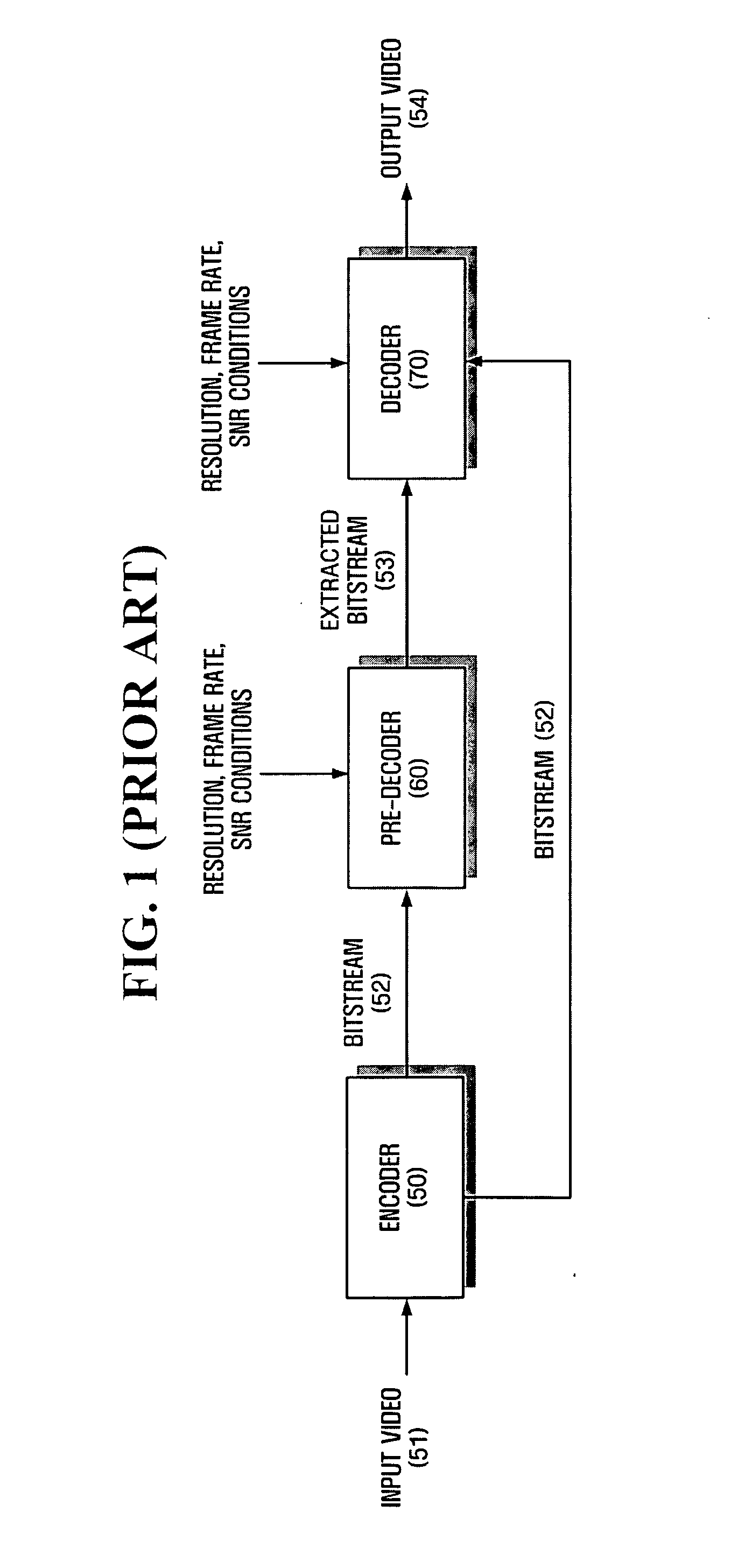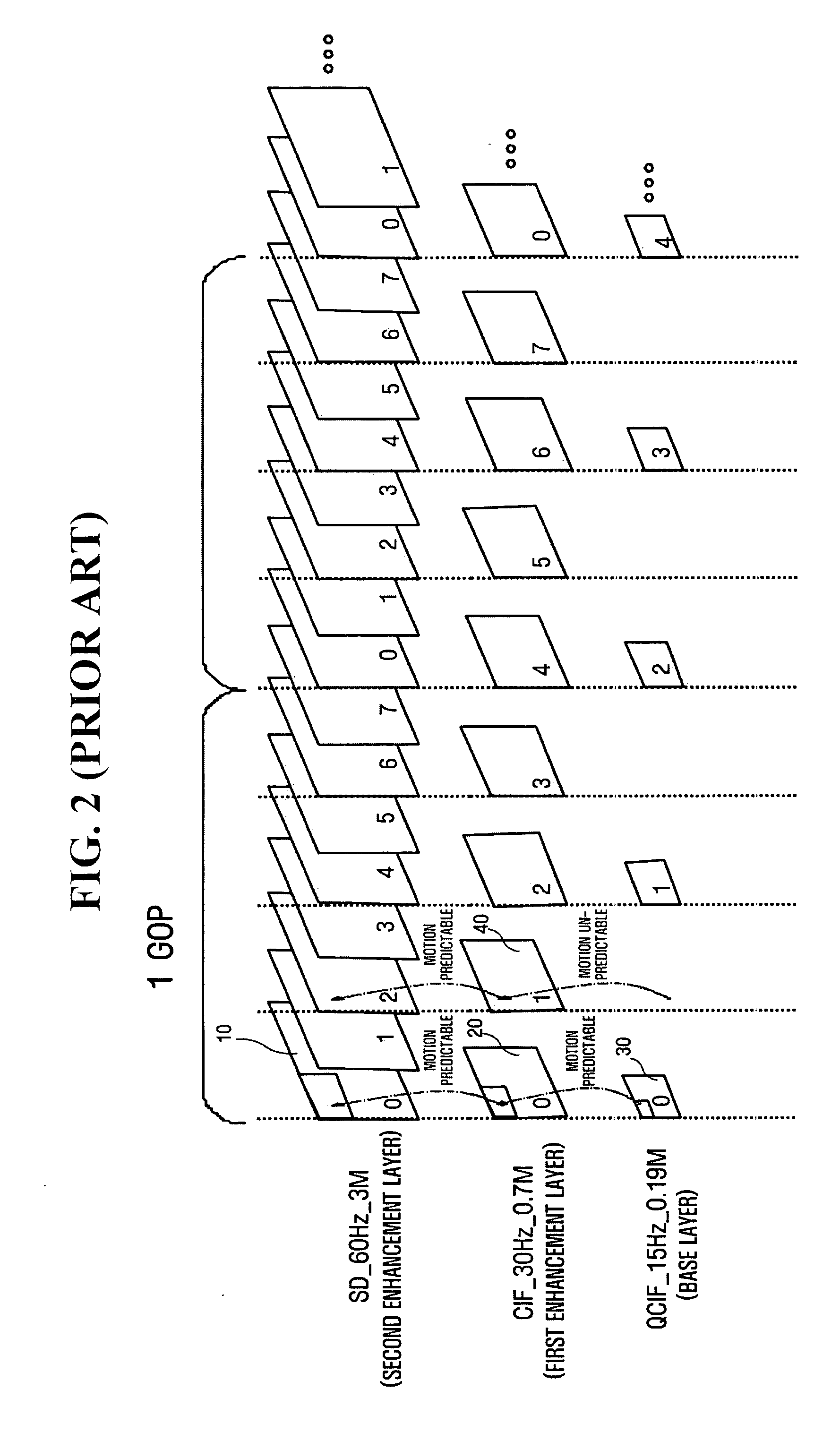Method and apparatus for effectively compressing motion vectors in video coder based on multi-layer
a multi-layer, motion vector technology, applied in the field of methods, can solve the problems of complex multi-layer structure, high cost, and high effort required to implement scalability based on multi-layer structure, and achieve the effect of efficiently predicting a motion vector
- Summary
- Abstract
- Description
- Claims
- Application Information
AI Technical Summary
Benefits of technology
Problems solved by technology
Method used
Image
Examples
first embodiment
[0061] The first embodiment will first be described. Referring to FIG. 9, if the resolution of the enhancement layer and the resolution of the base layer are the same, a motion vector having a spatial correlation with (that is, positioned directly corresponding to) the motion vector 65 is a motion vector 63. In this case, the motion vector 63 is a “filtered motion vector.”
[0062] If the resolution of the enhancement layer and the resolution of the base layer are not the same, a motion vector having a spatial correlation with (that is, positioned directly corresponding to) the motion vector 65 is a motion vector 64. In this case, the motion vector 64 is a “filtered motion vector.” Of course, the motion vector 64 has a spatial correlation with motion vectors 66, 67, and 68 as well as the motion vector 65.
second embodiment
[0063] Next, the second embodiment will be described, in which filtering is performed in consideration of not only motion vectors positioned directly corresponding to a certain motion vector but also motion vectors in the vicinity thereof. In this case, the term “a position having a spatial correlation” used herein is meant to embrace a directly corresponding position and a region including the vicinity thereof. The reason for enlarging the region in such a manner is that motion vectors have a spatial similarity and taking adjacent motion vectors into consideration may be advantageous for motion prediction.
[0064] If the resolution of the enhancement layer and the resolution of the base layer are the same, as shown in FIG. 9, while the motion vector 63 directly corresponds to the motion vector 65, filtering is performed in consideration of not only the motion vector 63 but also the motion vectors in the vicinity of the motion vector 63. For example, assuming that the “vicinity” of th...
PUM
 Login to View More
Login to View More Abstract
Description
Claims
Application Information
 Login to View More
Login to View More - R&D
- Intellectual Property
- Life Sciences
- Materials
- Tech Scout
- Unparalleled Data Quality
- Higher Quality Content
- 60% Fewer Hallucinations
Browse by: Latest US Patents, China's latest patents, Technical Efficacy Thesaurus, Application Domain, Technology Topic, Popular Technical Reports.
© 2025 PatSnap. All rights reserved.Legal|Privacy policy|Modern Slavery Act Transparency Statement|Sitemap|About US| Contact US: help@patsnap.com



